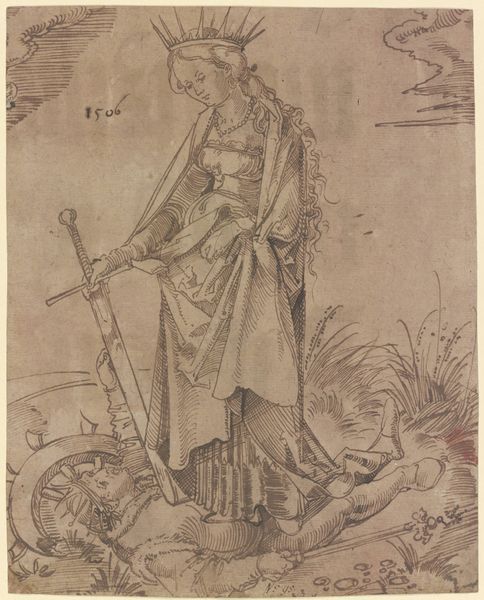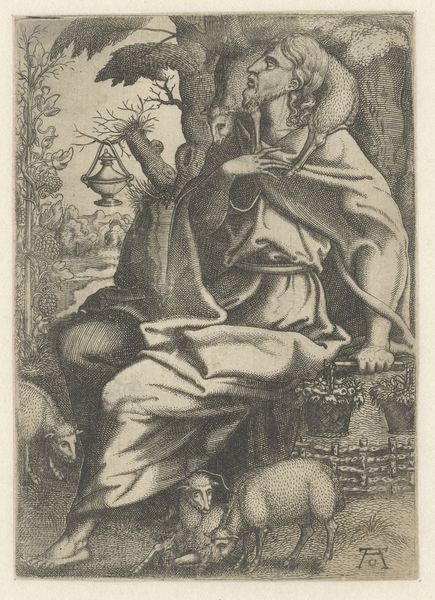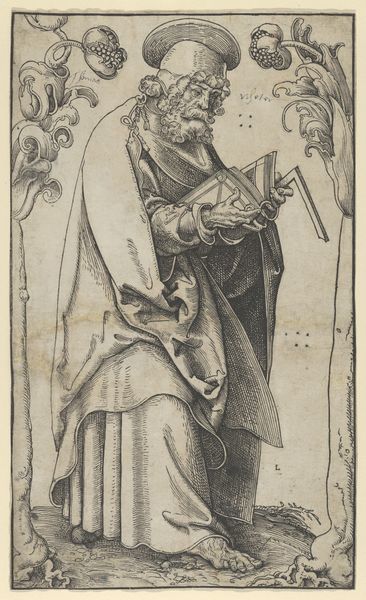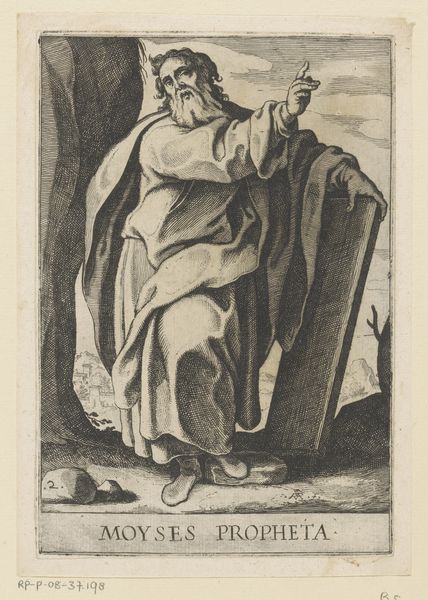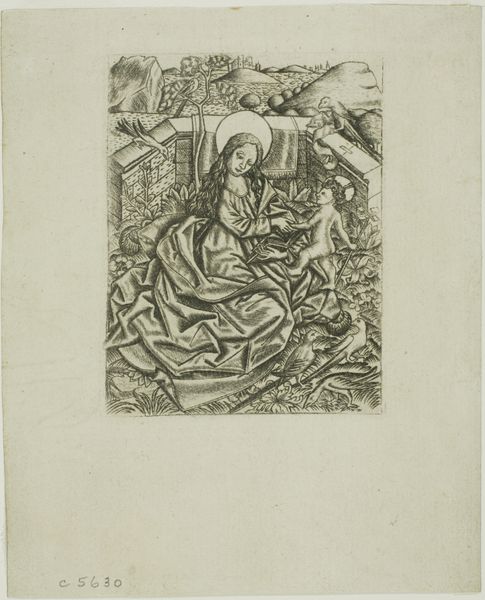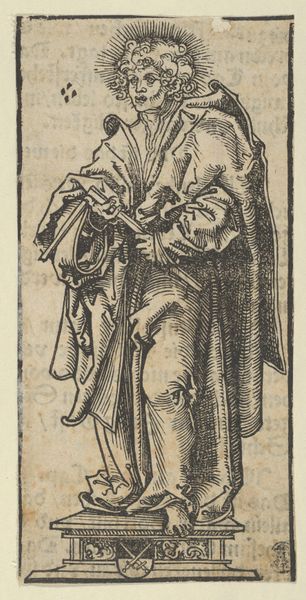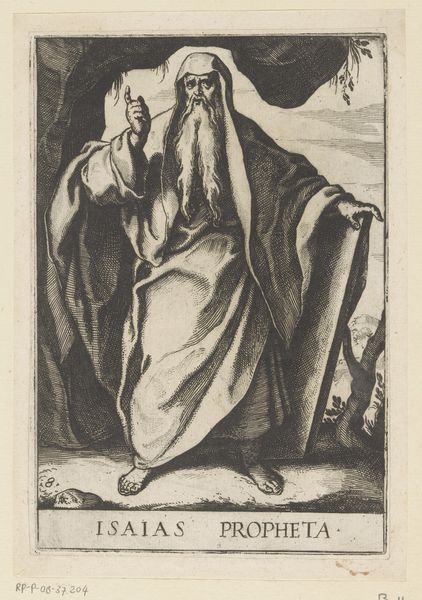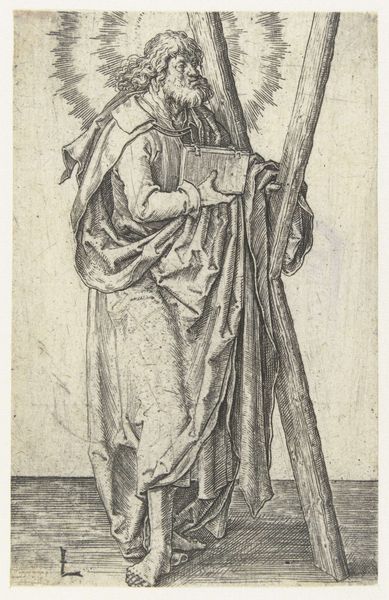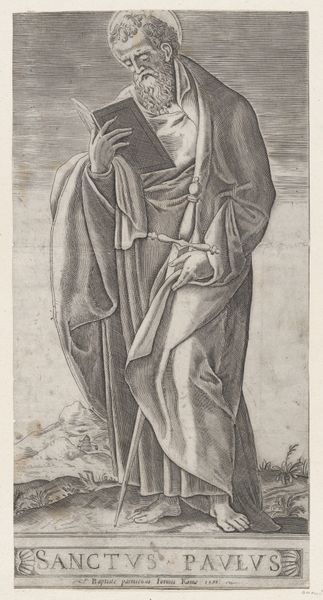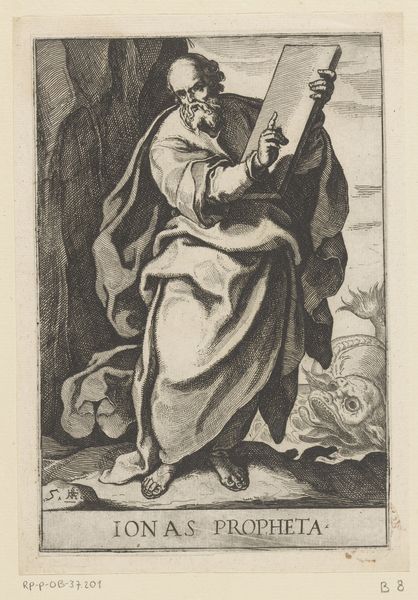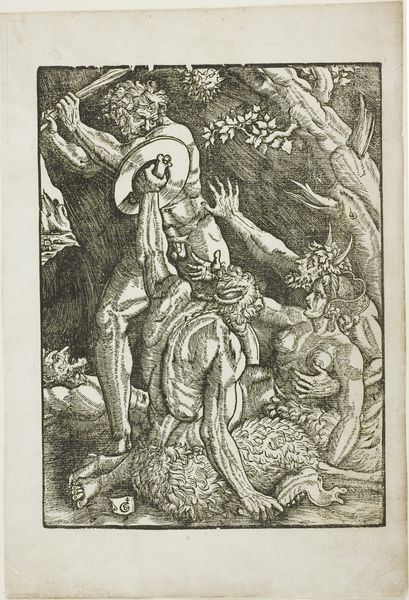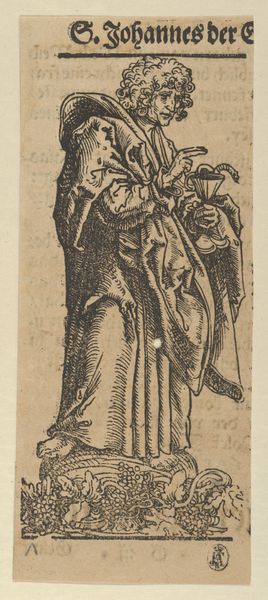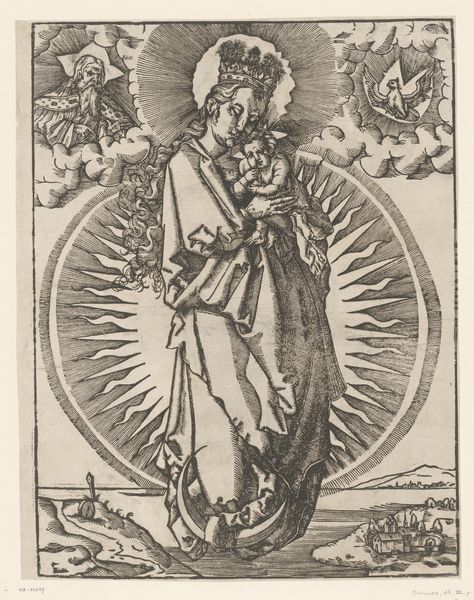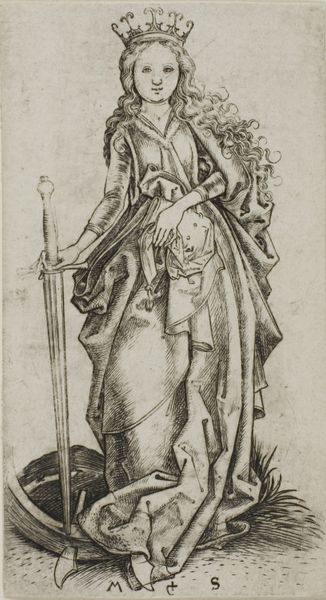
drawing, print, ink, engraving
#
portrait
#
drawing
#
medieval
# print
#
figuration
#
ink
#
history-painting
#
northern-renaissance
#
engraving
Dimensions: height 98 mm, width 62 mm
Copyright: Rijks Museum: Open Domain
Curator: This is "Johannes de Evangelist," a print by Israhel van Meckenem, created sometime between 1455 and 1503. It’s currently held in the Rijksmuseum. Editor: Immediately, the intricacy strikes me. The delicacy of the lines gives a quiet, contemplative feel. And that lamb! So meticulously rendered. Curator: Absolutely. As an engraving, it's fascinating to consider its production and reception during the Northern Renaissance. Prints democratized imagery, allowing broader audiences access to religious iconography and artistic styles. Van Meckenem, a prolific printmaker, played a significant role in that dissemination. Editor: Indeed. And consider the symbolic weight carried by John the Evangelist. Here, he's depicted with the Lamb of God – a potent symbol of Christ's sacrifice. The inscription on the banner echoes this, likely a variation of "Agnus Dei, qui tollis peccata mundi" – Lamb of God, who takes away the sins of the world. It's all so visually interconnected. Curator: What interests me, too, is how these images were circulated and understood within the social and religious contexts of the time. Did people readily grasp the theological nuances, or did the visual power of the image resonate on a more emotional level? Was it a personal devotional aid or displayed more publicly? These are the questions that come up. Editor: It likely functioned on multiple levels, simultaneously reinforcing religious doctrine and inspiring personal devotion. Notice how John’s hand gestures towards his heart. It's as if he's inviting the viewer to internalize the meaning of the lamb's sacrifice. Curator: It highlights how art in this period was far from passive. These were active tools. Engravings were used in everything from personal devotion to shaping civic identity. Editor: Exactly. Seeing those symbolic cues overlaid through careful drawing and rendering creates a unique and emotionally stirring visualization of Christian narrative, which is perhaps more broadly affecting to wider audiences. It reminds us that certain symbols stay relevant, yet take on fresh dimensions with each new rendition across the ages. Curator: Looking at this through both lenses reveals how artworks function not only as aesthetic objects, but as critical conduits of meaning.
Comments
No comments
Be the first to comment and join the conversation on the ultimate creative platform.
